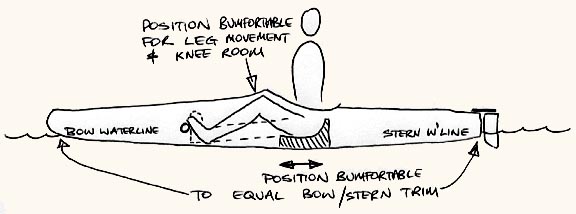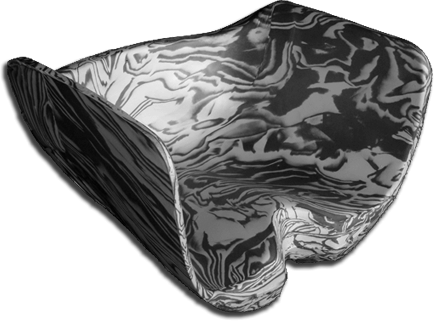Boat Trim and Seat Position
Boat speed will be best if you have the trim adjusted correctly. In other words, adjust your body position forward or back so that the boat is level when paddling at your normal speed. To adjust your position fore or aft, you will need to shift your seat and footrest accordingly. (For example: shifting forward will lower the bow in the water).
If the bow is higher than the stern, (tail heavy) the boat speed is usually reduced as the kayak tries to “climb over its wake”. If the bow is excessively lower than the stern, (nose heavy), the water line length of the kayak is not efficient, and excessive bow wave making slows the boat. This also makes steering difficult in some kayaks.
Stationary trim is different to the trim when paddling forward (kinetic trim). When you paddle the kayak, the bow of the kayak usually rises by 5 to 10 millimetres. We are only concerned with kinetic trim.
To test the trim, have an observer watch as you paddle at race speed in calm water. Ideally you want equal depth of immersion at bow and stern, or perhaps slightly deeper bow than stern (with deeper bow, the waterline shape then approximates an efficient foil shape). If your kayak has a lot of rocker (upward bend for ease of turning), you may find that both bow and stern are out of the water. Equalise this or have the nose slightly lower than the stern.
Most modern multi-sport kayaks have a raised deck above the knees. This is to give greater freedom to use legs in an efficient technique, and to prevent cramps. I worked with Sisson Kayaks in the 1980s to pioneer this feature in small cockpit multisport kayaks and we took care to position this raised deck in a position that would give the correct kinetic trim. Not all kayak manufacturers realize there is a difference between kinetic and static trim, so you may need to do an on-water check with yours. Some paddlers will find they need to shift a little further forward than they are accustomed to make the most of this leg room and to get the kinetic trim correctly adjusted.
(Disclaimer: The above section on Boat Trim is my opinion only and contains some generalisations about typical boat designs. Some designs may not follow this theory).

Leg and Foot Resting Position
Personally, I like to be able to straighten my legs (only just) and also to be able to touch them to the top deck, all the time with my toes touching the foot rest. This gives me the maximum amount of freedom to avoid cramps and also the most room to get a good leg pump/bum-rotation going. Essentially, this position mimics a K1 racing paddler’s leg position - see diagram above.

